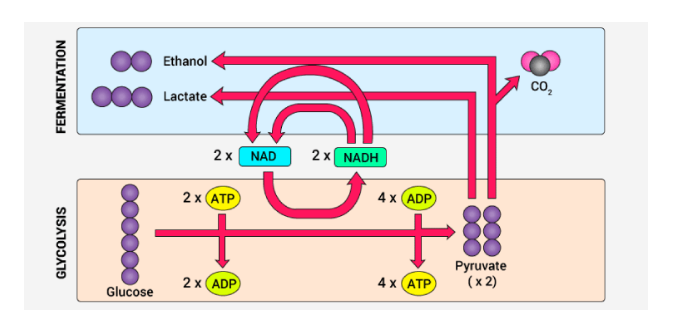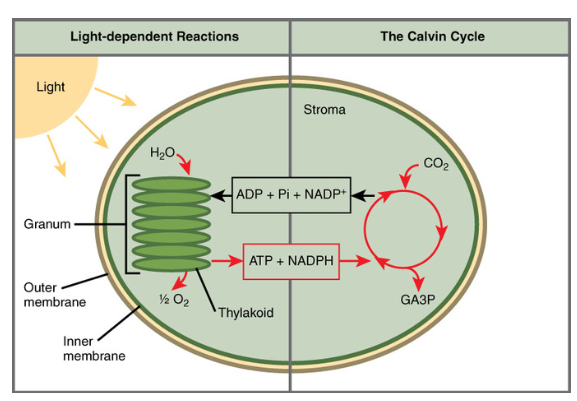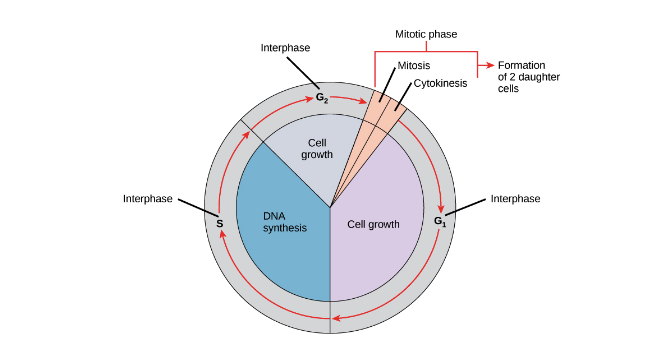Cellular Processes
Cellular Processes: Powering the Cell
Cells, the fundamental units of life, require a constant supply of energy to carry out their various functions, from growth and development to maintaining homeostasis. This energy fuels cellular processes like protein synthesis, transport of molecules across membranes, and muscle contraction. Two main cellular processes generate the energy that powers these activities: cellular respiration and photosynthesis.
Cellular Respiration: Breaking Down Molecules for Energy
Cellular respiration is a complex set of metabolic reactions that break down organic molecules (like glucose) in the presence of oxygen to release energy. This energy is captured in a molecule called adenosine triphosphate (ATP), often referred to as the “energy currency” of the cell. ATP can be readily used by cells for various energy-requiring processes.
There are two main types of cellular respiration:
-
Aerobic Respiration:

- Function: The most efficient form of cellular respiration, requiring oxygen as the final electron acceptor.
- Process: Glucose is broken down through a series of steps, including glycolysis, the Krebs cycle, and the electron transport chain.
- Location: Occurs in both the cytoplasm and mitochondria of the cell.
- Yield: Aerobic respiration produces a maximum of 36 ATP molecules per molecule of glucose.
-
Anaerobic Respiration:

- Function: A less efficient process that does not require oxygen. It serves as an alternative energy source when oxygen is limited.
- Process: There are different types of anaerobic respiration, but they all involve the breakdown of glucose without the complete Krebs cycle and electron transport chain.
- Location: Primarily occurs in the cytoplasm of the cell.
- Yield: Anaerobic respiration produces a much lower yield of ATP compared to aerobic respiration, typically 2 ATP molecules per molecule of glucose (in lactic acid fermentation) or 4 ATP molecules (in alcoholic fermentation).
Types of Anaerobic Respiration:
- Lactic Acid Fermentation: Occurs in muscle cells during strenuous exercise when oxygen supply is limited. Pyruvate, a product of glycolysis, is converted into lactate (lactic acid), which can cause muscle fatigue.
- Alcoholic Fermentation: Used by some yeasts and bacteria to produce ethanol (alcohol) and carbon dioxide. Pyruvate is converted into acetaldehyde and then into ethanol.
Importance of Cellular Respiration:
Cellular respiration is essential for all living organisms, as it provides the energy needed for survival and growth. It also plays a role in maintaining homeostasis by removing waste products like carbon dioxide.
Photosynthesis: Capturing Energy from Sunlight
Photosynthesis is a process by which plants, algae, and some bacteria capture energy from sunlight and convert it into chemical energy stored in organic molecules (primarily glucose). This process provides the foundation of the food chain, as it is the primary source of energy for most living organisms.
The Stages of Photosynthesis:

-
Light-Dependent Reactions (Light Reactions):
- Location: Occur in the thylakoids, membrane-bound structures within chloroplasts.
- Process: Light energy is absorbed by pigments (chlorophyll) in the thylakoids, leading to the excitation of electrons.
- Products: These excited electrons are used to produce ATP and NADPH (nicotinamide adenine dinucleotide phosphate), energy carriers essential for the next stage.
-
Light-Independent Reactions (Calvin Cycle):
- Location: Occurs in the stroma, the fluid-filled region within chloroplasts.
- Process: Carbon dioxide from the atmosphere is incorporated into organic molecules using the energy from ATP and NADPH generated in the light reactions.
- Product: The primary product of the Calvin cycle is glucose, which can be used by the plant for energy or converted into other organic molecules like starch or cellulose.
Importance of Photosynthesis:
Photosynthesis is critical for life on Earth. It not only provides the energy source for most organisms but also helps regulate the atmosphere by removing carbon dioxide and releasing oxygen.
Cell Cycle: The Ordered Progression of Cell Growth and Division
The cell cycle is a highly regulated sequence of events that leads to the growth, replication, and division of a parent cell into two daughter cells. This process ensures the continuity of life and allows organisms to grow, develop, and repair tissues.
The Phases of the Cell Cycle:

-
Interphase (G1, S, G2):
- Longest phase: The cell grows, replicates its DNA (during the S phase), and prepares for division.
- G1 phase (growth 1): The cell increases in size and carries out its regular functions.
- S phase (synthesis): DNA replication occurs, producing a duplicate set of chromosomes.
-
G2 Phase (growth 2):
- Preparation for division: The cell continues to grow and prepares for mitosis by synthesizing proteins needed for the mitotic spindle (a structure that aids in chromosome separation) and the cell wall/membrane (depending on the cell type).
- Cell checkpoints: During G2, there are checkpoints where the cell ensures its DNA is fully replicated and there are no errors before proceeding to mitosis.
-
Mitosis:
- Nuclear division: This phase is often referred to as cell division as it involves the division of the replicated chromosomes into two daughter nuclei. Mitosis is further divided into five subphases:
- Prophase: Chromosomes condense and become visible under a microscope. The nuclear envelope begins to break down. The mitotic spindle starts to form.
- Prometaphase: The nuclear envelope completely disappears. Microtubules from the mitotic spindle attach to the kinetochores (protein complexes on chromosomes).
- Metaphase: Chromosomes align at the center of the cell (metaphase plate) in a highly organized manner.
- Anaphase: Sister chromatids (copies of each chromosome) are pulled apart by the mitotic spindle fibers towards opposite poles of the cell.
- Telophase: The separated chromosomes arrive at the opposite poles. A new nuclear envelope reforms around each chromosome cluster, forming two daughter nuclei.
-
Cytokinesis:
- Division of the cytoplasm: This final phase follows mitosis and involves the physical division of the cytoplasm and organelles into two daughter cells. The method of cytokinesis can differ depending on the cell type:
- Animal cells: A cleavage furrow forms at the cell’s equator, pinching the cell membrane inward until it separates completely, forming two daughter cells.
- Plant cells: A cell plate forms along the midline of the dividing cell, eventually developing into a new cell wall that separates the two daughter cells.
Regulation of the Cell Cycle:
The cell cycle is tightly regulated by a group of proteins called cyclins and cyclin-dependent kinases (CDKs). These proteins work together to ensure the proper sequence of events and prevent uncontrolled cell division, which can lead to cancer.
Importance of the Cell Cycle:
The cell cycle is essential for all living organisms. It allows for controlled growth, development, and repair of tissues. Disruptions in the cell cycle can lead to various diseases, including cancer.
Conclusion: The Interconnected World Within the Cell
Cellular processes like cellular respiration, photosynthesis, and the cell cycle work together to maintain the balance and survival of the cell. Cellular respiration provides the energy needed for various functions, while photosynthesis captures energy from sunlight to fuel the production of organic molecules. The cell cycle ensures the orderly growth and division of cells, allowing organisms to grow, develop, and reproduce. Understanding these fundamental processes provides a deeper appreciation for the intricate workings of the cell, the basic unit of life.
Additional Points to Consider:
- Discuss the role of mutations in the cell cycle and their potential consequences.
- Briefly explore the concept of cell differentiation, where cells become specialized for specific functions.
- Mention the different types of cell death (apoptosis and necrosis) and their significance.
By delving into these cellular processes, you gain valuable insights into the fascinating world within the cell, the foundation of all living things.
